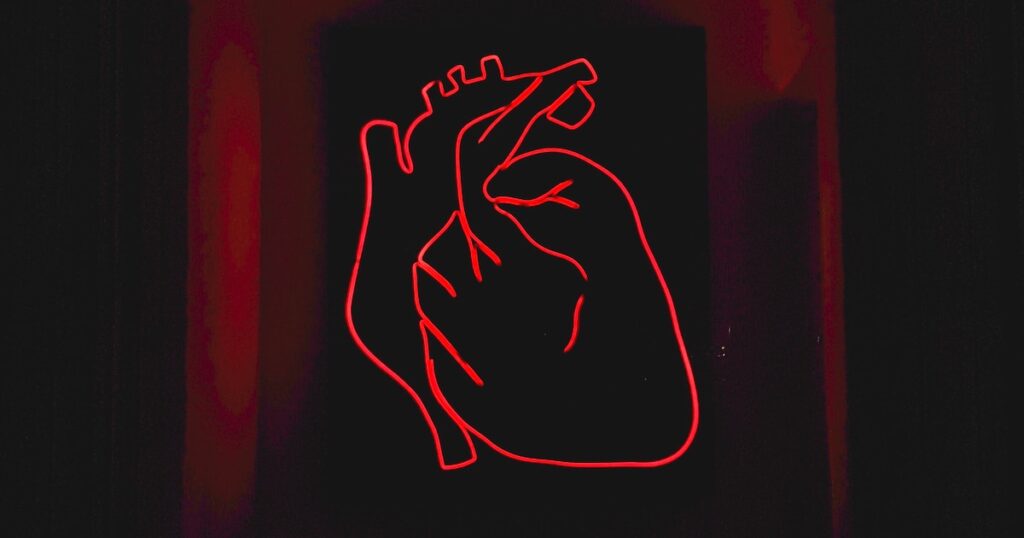
Steps to Become a Neonatal Nurse Practitioner
Neonatal nurse practitioners deliver essential healthcare to newborns with high-risk [...]

As a cardiologist, you’ll work with and advocate for patients to prevent heart disease and common heart and cardiovascular problems. You’ll perform some invasive procedures—cardiac catheterizations, for example—but you won’t do cardiac surgery (cardiothoracic surgeons do that; you’ll certainly know some, as you’ll be referring patients to them). You’ll also teach your patients about general heart health and work closely with patients’ families and loved ones as they undergo traumatic operations and treatment.
So, is training to become a cardiologist worth it? Your investment of time and money will be substantial, but you’ll also earn an excellent living… eventually. And you will save people’s lives. Want to know more? In this article, we’ll cover:
Doctors’ salaries are high in the United States; it’s one reason why everyone’s mother wants them to become a doctor. Cardiologists can earn over $325,000 annually.
“Doctor” is the most-respected profession in the United States.
To quote a TV doctor, Derek Shepherd of Grey’s Anatomy fame, “It’s a beautiful day to save lives.” You’ll get to do exactly that as a cardiologist.
A complex system like the heart and blood vessels opens the doors to specialization. Whether it’s interventional cardiology or pediatrics, you’ll likely find a cardiac specialty with study and practice.
Becoming a cardiologist isn’t cheap; the average medical school debt is over $200,000 .
Undergrad, med school, residency, fellowship—all combined, it can take 15 years (or more) to become a practicing cardiologist. These medical school tips can help you along your way.
You will work long hours as a cardiologist, and you’ll often be on call overnight and on weekends.
You will frequently have to deliver bad news to patients and their families. It can be emotionally challenging.
Even doing your job perfectly—and who does any job perfectly?—there’s no guarantee you won’t be sued. According to Medscape, 60 percent of cardiologists are named in a medical malpractice lawsuit at least once in their careers, according to a 2017 study.
It seems obvious, given the aforementioned hours, heavy emotional toll, and potential legal issues. As a cardiologist, the responsibility of saving the lives of patients can put stress on your own heart, and even raise your blood pressure.
In general cardiology, you’ll work with the heart and blood vessels, evaluating, diagnosing, and treating patients to prevent heart disease and additional heart conditions. Most cardiologists work as noninvasive cardiologists, although some cardiologists branch out into more invasive specialties. Some of your job duties will include ordering and interpreting tests such as EKGs, talking to patients and families, and performing physical exams.
Some specialties and disciplines within cardiology include:
Interventional cardiology is an important subspecialty where cardiologists perform procedures like breaking past calcification and unblocking blood vessels. According to a 2020 report, interventional cardiologists are among the five highest-paid cardiology subspecialties, with the median earning $674,910 in total compensation in 2020.
These professionals work on children, or even fetuses. According to Salary.com, the median compensation for pediatric cardiologists is $332,460.
Echocardiology is the process of utilizing sound to perform the necessary imaging of the heart. There are several kinds of echocardiograms that can detect disease and see if treatments are working. Echocardiologists are non-invasive cardiologists, meaning they rank among the five highest-paying subspecialties. The median compensation for these professionals was $137,446 in 2023.
These professionals specialize in treating arrhythmias—irregular heartbeats. They can also be called cardiac electrophysiologists. Electrophysiologists are the highest paid cardiologists, earning $678,495.
Preventative cardiology focuses on stopping heart disease before it begins, or arresting the process before it gets worse. Preventative cardiology is considered non-invasive.
According to the Cleveland Clinic, these professionals “have experience and expertise in managing symptoms and delaying the progression of heart failure.” They can recommend procedures like heart transplants. Advanced heart failure cardiologists earned a median total compensation of $370,174 in 2020, rounding out the top five sub-specialties.
After you finish medical school, pass your boards, and complete an internal medicine residency and a cardiology fellowship, you’ll typically start work in a hospital or a private practice.
Some essential functions cardiologists perform include:
This could involve performing a cardiac stress test, which monitors a patient’s heart during physical activity. Alternatively, you may assign your patient to wear a heart monitor, either for a few days or a longer period. Non-physical tests include electrocardiograms (ECG) and positron emission tomography (PET) scans, which can help identify issues.
Procedures can be minimally invasive or more complex. Minimally invasive surgeries include inserting a pacemaker, cardiac catheterization, and performing angioplasty procedures. Complex procedures can include heart valve surgery, bypass surgery, and open heart surgery.
Many students start working toward their goal of becoming a cardiologist as early as their undergraduate studies. You can take classes or complete internships to learn about cardiac imaging and other job responsibilities as you start your cardiology training.
A traditional cardiology education timeline may look like:
You do not need to complete a pre-med track, or even earn a science degree, during your undergraduate education to pursue medicine. Of course, you need to complete the education eventually, but it’s possible to get into good programs with a non-traditional background.
Med school combines coursework and clinical training. It lasts four years in total, split evenly between the two parts.
After med school, you’ll complete a residency, which lasts three years. During residency, you work at a healthcare facility and provide basic supervised care. This also is where you decide which specialization to pursue. Cardiologists choose internal medicine.
After residency, you’ll pursue a cardiology fellowship, which typically lasts three years, though it could be longer. The Columbia University fellowship, which lasts between three and four years, focuses on both patient care and research.
Medical school requirements include:
Remember, you don’t need to be a science or pre-med major, but you do need to complete relevant coursework. This includes lab and coursework in biology, chemistry, organic chemistry, biochemistry, and physics. You also need coursework in humanities and mathematics, typically calculus or statistics. Relevant coursework should be completed at the undergraduate level.
The MCAT is the SAT for aspiring doctors. The highest possible MCAT score is 528. Though numbers can change year-to-year, 2023 test-takers who scored 514 or above were in the top ten percent.
Having several diverse experiences proves you’re both ready for and committed to a career in medicine. You can gain experience in a number of ways, including scribing for a doctor, volunteering at a hospital or clinic, and conducting research.
Letters of recommendation are an essential component of your medical school application. Harvard University allows up to six letters, including two or more from science professors, one from a non-science professor, and more from research supervisors or employers.
Preventing heart disease, interpreting test results, and performing sensitive procedures are high-level tasks requiring licensure and accreditation. These come in the form of:
You may earn a Doctor of Medicine (MD) or Doctor of Osteopathic Medicine (DO) degree. Most cardiologists are MDs, but osteopaths, who typically offer a more holistic approach to medicine, also can specialize.
You must pass the United States Medical Licensing Exam (USMLE) or Comprehensive Osteopathic Medical Licensing Exam (COMLEX) to attain state licensure.
You must be certified in your practice area. For cardiologists, this means completing a American Board of Internal Medicine certification after your residency, which involves another certification exam. Cardiology-specific exams include Cardiovascular Disease and Clinical Cardiac Electrophysiology.
You may earn additional certifications, depending on the type of subspecialty you want to practice. According to the Joint Commission, an accreditation service, potential certifications include Acute Heart Attack Ready, Comprehensive Cardiac Center, Ventricular Assist Device, and Heart Failure.
Before you even become board-certified in cardiovascular medicine, you’ll advance through your medical school rotations (two years), your internal medicine residency (three years), and your fellowship (three to four years).
According to the US Bureau of Labor Statistics (BLS), some subspecialties, such as cardiothoracic surgery or pediatric cardiology, require additional training. Some cardiologists began their training as cardiovascular technologists or other jobs in the cardiac field. These types of in-the-field experiences can help you uncover a passion for niche cardiovascular work and bring your career in focus.
A cardiologist generally works on staff at a hospital or private practice, and in most cases will be called an “attending.” You may spend your whole career as an attending, or you may pursue opportunities to become the head or chief of your cardiology department.
Once you’re practicing as a cardiologist, you’ll need to stay on top of all new medical advancements. States have different continuing medical education requirements for doctors to maintain their licenses. This is known as continuing medical education (CME) and is set by the Accreditation Council for Continuing Medical Education (ACCME). No matter what specialty you choose, you’ll need to continue your education throughout your career.
Study guides for the USMLE step 1, the USMLE step 2 CK, the MCAT, and other medical school exams are very helpful. Check out our hack guide to guarantee medical school admission.
You can bolster your cardiology profile with memberships to:
Joining this professional organization gives you access to journals, funding opportunities, and conferences, among other perks.
The American College of Cardiology helps professionals improve the quality of cardiology care. They accomplish this primarily through continuing education and meetings.
This organization targets all pediatric professionals, including pediatric cardiologists; it provides professional support and continuing education to advance your practice.
You should also build strong relationships with your professors and supervising doctors in your residency program. Networking is critical in any profession, even medicine. Pursue research opportunities during your undergraduate program and in medical school. Explore different specialties and learn from specialized cardiologists. You’ll learn more and increase your value to patients and employers.
Consider the long game when you’re becoming a cardiologist: Achieving all of your medical career goals is a one-day-at-a-time process requiring a lot of work and a considerable amount of time. Not everyone makes it. In 2019, 1,788 medical students applied for 1,199 available cardio fellowships. 1,194 of those were filled, leaving 577 applicants in search of an alternative. The medical profession is positively Darwinian, and it can be heartbreaking (no pun intended). For those who make the grade, however, the rewards are considerable.
(Updated on January 17, 2024)
Questions or feedback? Email editor@noodle.com

Neonatal nurse practitioners deliver essential healthcare to newborns with high-risk [...]

Eating disorder recovery isn't just about body image; eating disorders [...]
Categorized as: Medicine, Nursing & Healthcare